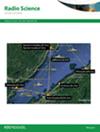DynaClusterNet:基于动态集群网络的边缘计算路由优化
IF 1.5
4区 地球科学
Q3 ASTRONOMY & ASTROPHYSICS
引用次数: 0
摘要
物联网导致数据生成和网络复杂性激增,特别是在具有动态拓扑和移动对象的边缘环境中。传统的边缘计算聚类方法往往不能解决这些挑战,如有效的数据聚合和计算管理。DynaClusterNet是一个新的框架,它引入了三个协议:基于集群的自适应部署协议(ACDP)、动态藻类蜘蛛协议(DASP)和深度Q路由协议(DQRP)。ACDP使用Voronoi图来优化节点部署和簇的形成,而DASP使用人工藻类和黑寡妇算法来动态选择簇头并优化数据传输。DQRP使用深度强化学习来确定有效的路由路径,适应环境变化、节点移动性和不断发展的网络拓扑。DynaClusterNet在端到端延迟、能耗和包交付率方面明显优于现有协议。与竞争协议相比,它确保了健壮、高效和适应性强的网络性能,端到端延迟最小,约为0.05 s,能耗显著降低。本文章由计算机程序翻译,如有差异,请以英文原文为准。
DynaClusterNet: A dynamic clustering network-based routing optimization for edge computing
The Internet of Things has led to a surge in data generation and network complexity, especially in edge environments with dynamic topologies and moving objects. Traditional clustering methods in edge computing often fail to address these challenges, such as efficient data aggregation and computational management. DynaClusterNet, a novel framework, introduces three protocols: Adaptive Cluster-Based Deployment Protocol (ACDP), Dynamic Algae Spider Protocol (DASP), and Deep Q Routing Protocol (DQRP). The ACDP uses Voronoi diagrams for optimal node deployment and cluster formation, while the DASP uses Artificial Algae and Black Widow Algorithms to dynamically select cluster heads and optimize data transmission. The DQRP uses deep reinforcement learning to determine efficient routing paths, adapting to environmental changes, node mobility, and evolving network topologies. DynaClusterNet significantly outperforms existing protocols in terms of end-to-end delay, energy consumption, and Packet Delivery Ratio. It ensures a robust, efficient, and adaptable network performance with a minimal end-to-end delay of approximately 0.05 s and significantly lower energy consumption profile than competing protocols.
求助全文
通过发布文献求助,成功后即可免费获取论文全文。
去求助
来源期刊

Radio Science
工程技术-地球化学与地球物理
CiteScore
3.30
自引率
12.50%
发文量
112
审稿时长
1 months
期刊介绍:
Radio Science (RDS) publishes original scientific contributions on radio-frequency electromagnetic-propagation and its applications. Contributions covering measurement, modelling, prediction and forecasting techniques pertinent to fields and waves - including antennas, signals and systems, the terrestrial and space environment and radio propagation problems in radio astronomy - are welcome. Contributions may address propagation through, interaction with, and remote sensing of structures, geophysical media, plasmas, and materials, as well as the application of radio frequency electromagnetic techniques to remote sensing of the Earth and other bodies in the solar system.
 求助内容:
求助内容: 应助结果提醒方式:
应助结果提醒方式:


